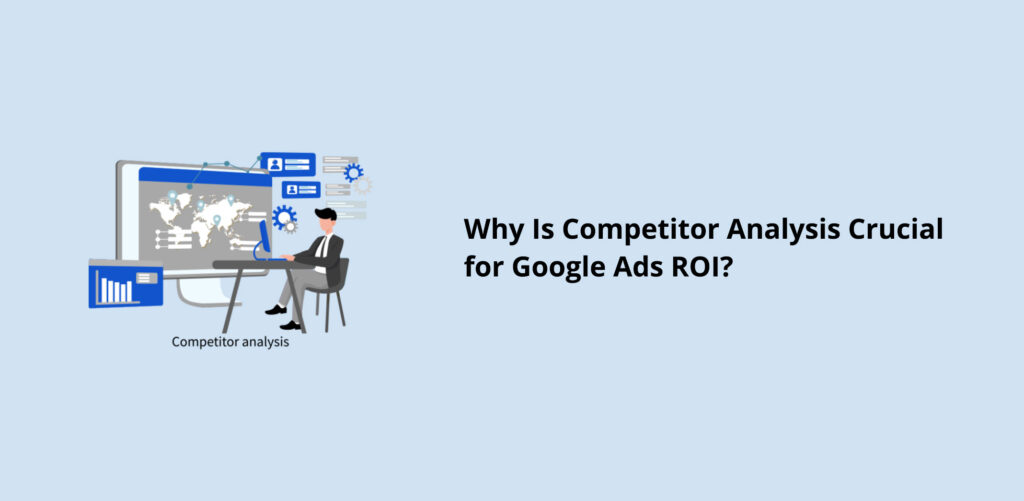Online advertising is evolving year-over-year, and so does the competition. If you find yourself wrestling with stubborn CPC and CPL numbers, know that you’re not alone in this tough battleground.
But, what if you want to stay ahead and achieve those all-important metrics, whether it’s CPL, CPC, or ROI? The answer starts with competitive analysis in Google Ads.
This approach isn’t merely “playing detective”; it’s a strategic move that involves understanding your rivals’ tactics and then outperforming them. With the help of specific tools, you can gain a sneak peek into your competitors’ playbook, allowing you to boost your ROI like a pro.
Today, we’ll delve into the secrets of competitor analysis, showing you how to elevate your advertising game.
Let’s talk about the problem first,
The Problem
1. Increasing costs:
a. High CPC (Cost Per Click):
- What: The amount paid for each click on an ad has surged.
- Why: With more advertisers bidding on the same keywords, the cost for those keywords has skyrocketed.
- Impact: Higher costs make it harder to see a profitable return on advertising spend.
b. Elevated CPL (Cost Per Lead):
- What: Acquiring a lead or a potential customer costs more than it used to.
- Why: Increased competition, ineffective targeting, or poorly optimized landing pages can contribute to high lead costs.
- Impact: It affects the overall budget for marketing, squeezing profit margins, and limiting growth opportunities
2. More Competitors:
- What: An influx of new competitors in the market bidding on similar keywords and targeting the same audience.
- Why: More businesses are recognizing the value of online advertising, leading to a crowded advertising space.
- Impact: This saturation forces advertisers to fight harder (and pay more) for visibility, often leading to a bidding war that inflates prices.
3. Declining Impact of Ads:
- What: The effectiveness of ads in generating leads or sales seems to be waning.
- Why: Ad fatigue, poor ad quality, and increased competition can make it harder for ads to stand out.
- Impact: Less impactful ads mean lower conversion rates and a diminished return on investment.
4. The Historical Success is No Longer Relevant:
- What:
Days when advertisers could generate leads for a dollar or clicks for a cent are gone. - Why: Market saturation, evolving algorithms, and changes in user behavior have altered the advertising landscape.
- Impact: Relying on old strategies can lead to inefficiencies, wasted spend, and missed opportunities.
5. Manual Analysis is Time-Consuming and Inefficient:
- What: Attempting to manually analyze competitors, ad schedules, and ad copies is nearly impossible and incredibly time-consuming.
- Why: The sheer volume of data, complexity of platforms, and dynamic nature of online advertising make manual analysis unfeasible.
- Impact: Time spent on ineffective analysis takes away from core business activities, hindering growth, and performance.
The Solution: Competitor Analysis
Uncovering Your Competitors:
- Knowing Your Adversaries:
In today’s competitive landscape, ignorance of your rivals is a huge disadvantage. Tools like PPC Reveal are designed to pull back the curtain and expose your competitors’ strategies.
By entering targeted keywords, you can discover who else is aiming for the same customers, what they’re promising, and how they’re promoting themselves.
This information allows you to forge a strategy that either mirrors successful approaches or pioneers a new path altogether.
For instance, if you specialize in residential plumbing in Seattle, PPC Reveal can show you other plumbing businesses in your area targeting the same audience.
You may find that several competitors are offering discounts on leak detection or sewer line repair. This insight can guide you to either create a competitive offer or focus on other under-served services, like pump maintenance.
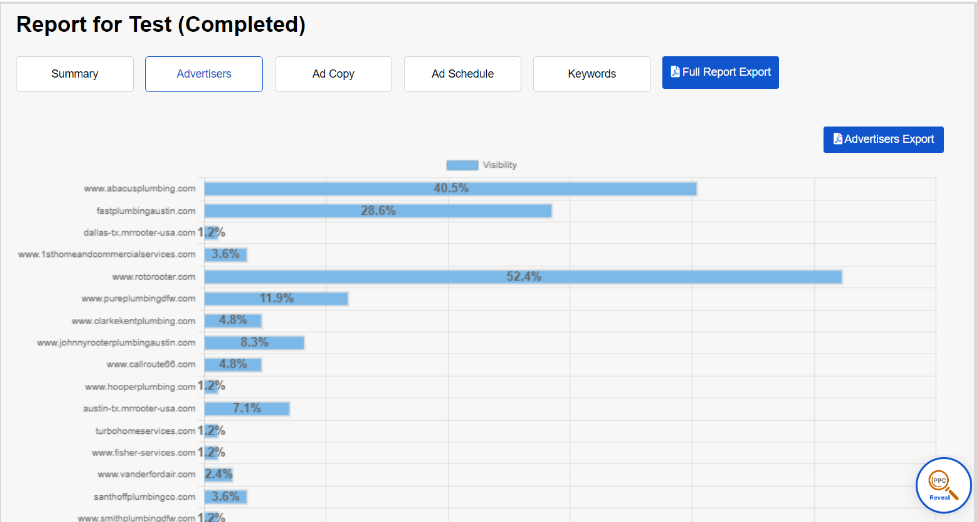
Tools that offer insight into your competitors’ strategies equip you with the means to scrutinize their tactics, from the specific keywords they’re pursuing to the landing pages they employ to convert visitors.
This transparency affords you the opportunity to enhance your current strategy or carve out a new niche.
Let’s say,: If your competitors are targeting keywords related to “plumbing repair” and linking to well-designed landing pages with customer testimonials, you can decide to target similar keywords and enhance your landing pages with video testimonials to provide a richer user experience.
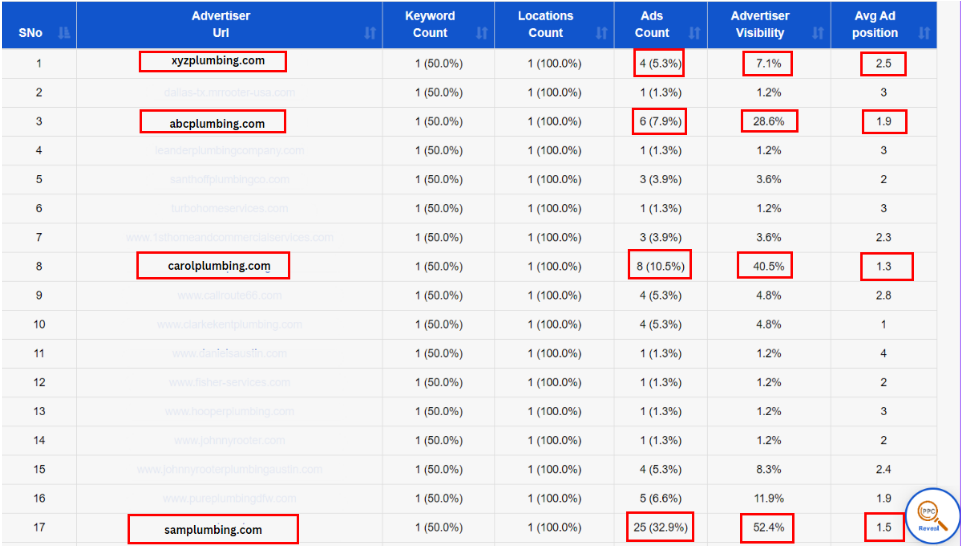
Imagine you run a plumbing service business and are looking to enhance your online advertising presence to compete with other companies in the local market. You conduct a competitive analysis to see how your key competitors are performing in terms of online advertising. Here’s what you find:
- xyzplumbing.com: They are running 4 ads that appear on 7.1% of the searches relevant to your industry. Their ads are typically positioned at 2.5, meaning they’re usually found somewhere between the second and third positions on the search results page.
- abcplumbing.com: With 6 ads, they have a significantly higher visibility of 28.6%, and their ads are typically positioned at 1.9, appearing closer to the top of search results.
- carolplumbing.com: They have 8 ads with an impressive 40.5% visibility and an ad position of 1.3, usually ranking them at the top of the page.
- samplumbing.com: This competitor has a robust ad strategy with 25 ads, achieving 52.4% visibility, and their ads are typically positioned at 1.5, indicating a strong presence at the top of search results.
Based on this analysis, samplumbing.com and carolplumbing.com are clearly focusing more on advertising and reaching a broader audience. Their high visibility and ad positioning near the top of the page suggest they are likely to be more aggressive competitors.
Now, if your target audience is more aligned with what samplumbing.com and carolplumbing.com offer, you should reconsider your advertising strategy. You might decide
Decoding the Ad Copy and Ad Strategy:
- Understanding the Messaging:
With Ads intelligence tools, you no longer need to guess what’s resonating with your audience.
By providing a view into your competitors’ messaging, you can see what incentives, promises, and call-to-actions are converting potential customers.
This vital intel enables you to create compelling advertisements that mirror the desires and needs of your audience.
Continuing the plumbing example, a quick analysis might show that your competitors use phrases like “24/7 emergency service” and “no hidden fees.” You can incorporate these terms into your ads or add a unique promise, such as a “same-day service guarantee,” to gain a competitive edge.
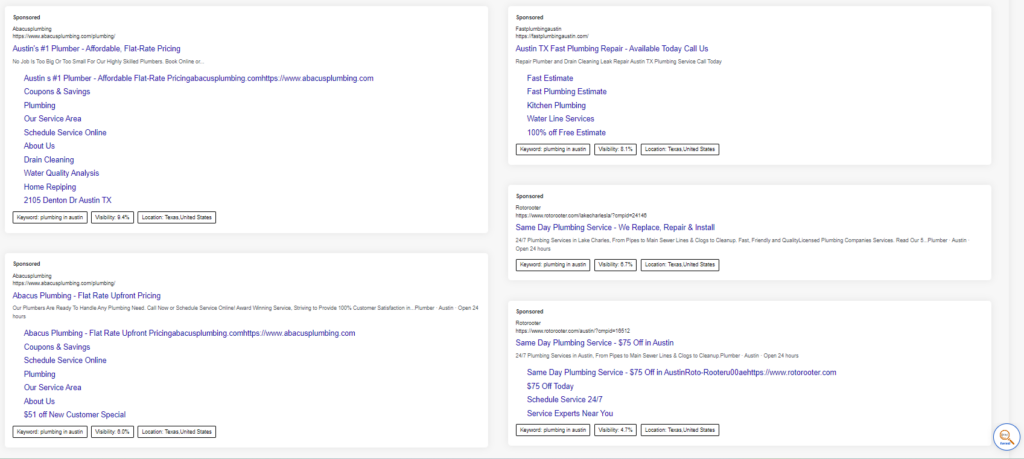
- Identifying Unique Selling Points:
Success in advertising often hinges on differentiation. Understanding what makes your competitors unique enables you to either mirror their success or create contrasting ads that highlight your own unique selling points
By identifying what sets your competitors apart, you can craft targeted ads that don’t just blend in but stand out and seize attention.
For Example: Your competitor offers a free initial inspection for plumbing issues. You could counter this by offering a free inspection plus a discount on the first repair service, thus setting you apart.
Unveiling Ad Schedules:
- Optimizing Timing:
In advertising, timing can play a crucial role. Ads intelligence tools offer a window into your competitors’ advertising schedules, empowering you to adjust your ad placements to either coincide with or counter their efforts.
Whether you choose to meet them head-on or exploit gaps in their timing, the result is ads that reach viewers at the most impactful moments.
Let’s say if your competitors’ ads mostly appear during weekdays, you may choose to increase your ad visibility on weekends, capturing the audience’s attention when your competitors are less active.
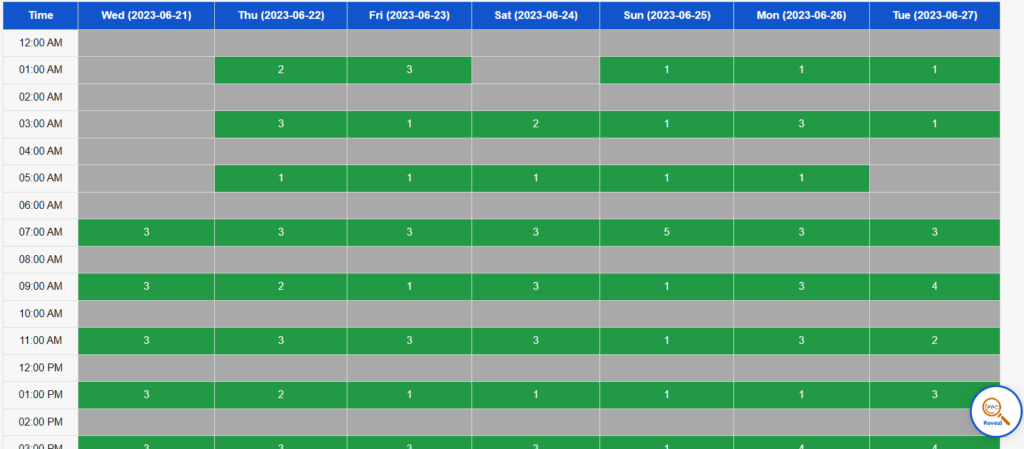
- Strategic Planning:
Rather than merely reacting to competitors’ scheduling, these insights enable you to craft a strategic ad schedule that is based on data and aligned with your unique goals.
By understanding when and how often your competitors advertise, you can create a targeted schedule that maximizes exposure while minimizing unnecessary spend.
Enhancing Your ROI:
- Fine-Tuning Strategies:
With comprehensive knowledge of your competitors’ tactics and messaging, you can adjust your strategies to more closely align with the interests and behaviors of your target audience. The result? Improved click-through rates, increased conversions, and a more substantial return on investment.
Example: By recognizing that your competitors are focusing on the eco-friendly nature of their products, you can refine your strategy to emphasize your products’ sustainability and environmental impact, potentially increasing your click-through rates among eco-conscious consumers.
- Driving Quality Traffic:
By understanding the competitive landscape and how others are appealing to your target audience, you can create more targeted and appealing ads.
This focused approach does more than just increase clicks; it attracts quality traffic – potential customers genuinely interested in what you have to offer.
This quality over quantity approach leads to higher conversion rates and a more successful campaign overall.
Conclusion
You can’t run Google Ads in a vacuum. The Ad world is a complex battlefield where understanding your competitors’ strategies will make the difference between success and failure.
From uncovering hidden competitors to decoding their ad copies and schedules, the insights gained through competitive analysis is a game-changer.
By embracing these strategies, & investing in tools like PPC Reveal can help you boost your confidence & help you at winning the Google Ads game!

